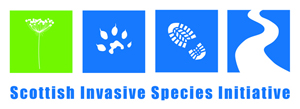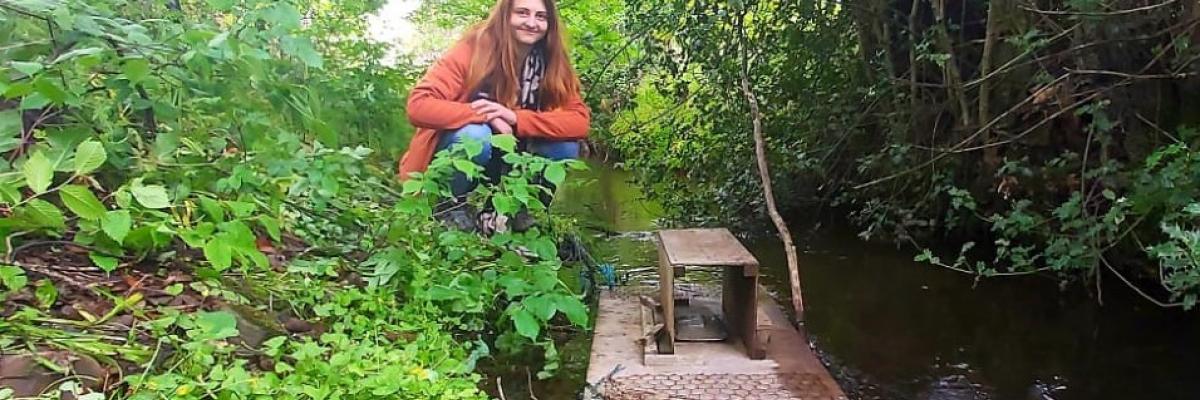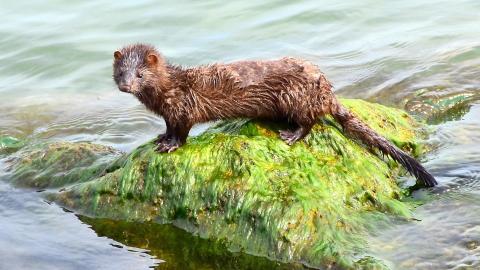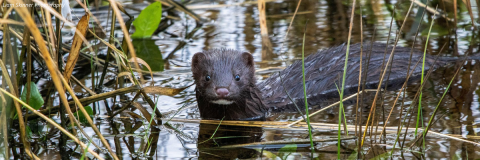The American mink (Mustela vison) is a well-known invasive non-native species. It spread throughout the country following escapes from fur farms in the latter half of the 20thcentury. Being an opportunistic predator, often killing more than they require for food, mink have had a devastating effect on our native wildlife. In particular ground nesting birds and water vole populations are vulnerable to predation by this avid hunter.
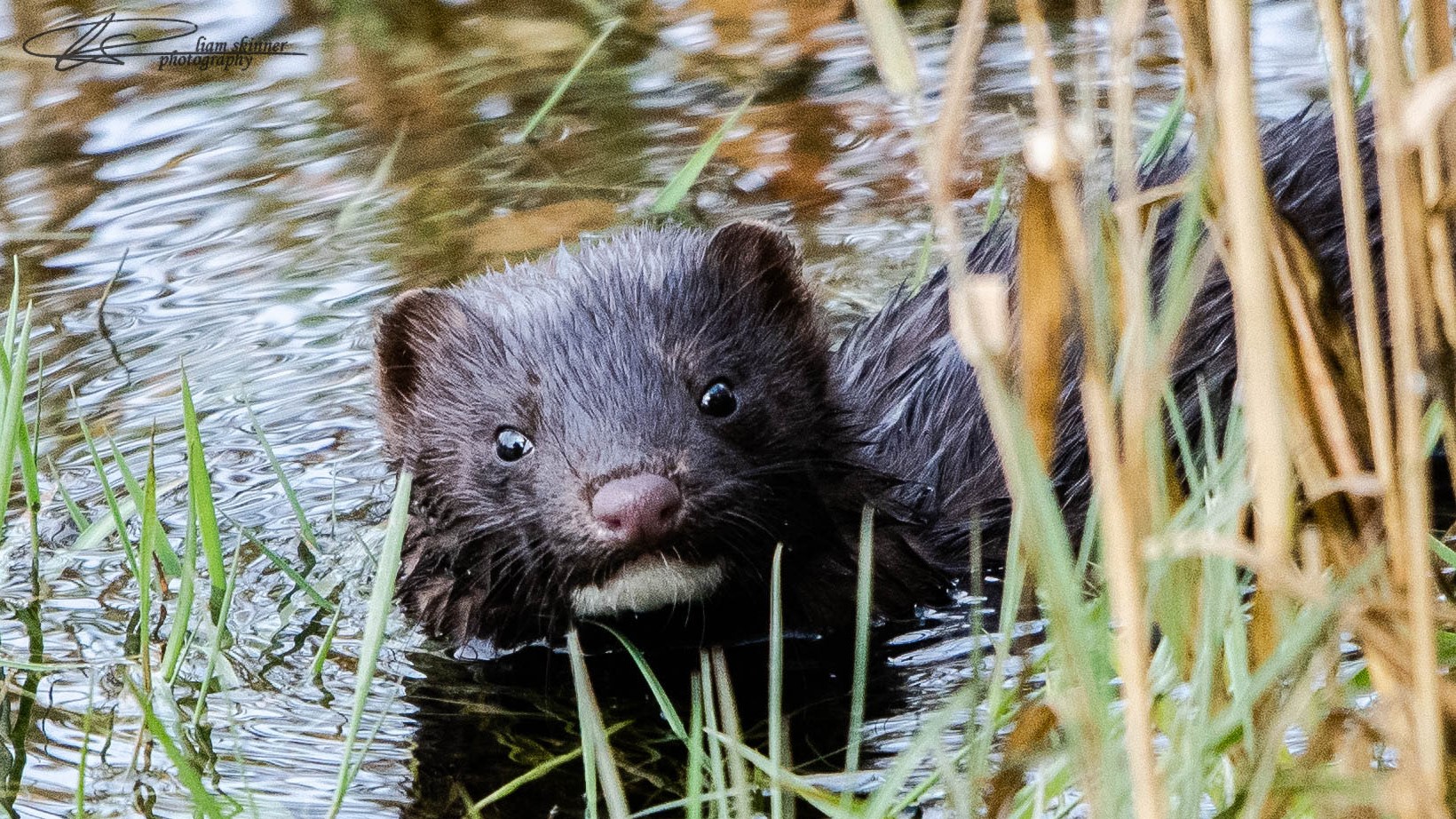
The mink is a semi-aquatic mammal with rich, usually dark brown fur, and white chin patch which belongs to the “Mustelid” family. It occupies both freshwater and saltwater habitats and follow waterways, lake edges and coasts.
To find out more about identifying mink, their introduction and impacts visit our mink page.
Seen a mink? Please report it to us.
The Mink Control Project
The Scottish Invasive Species Initiative is working with volunteers and partners to control mink across the northern third of Scotland. This is done by using mink monitoring rafts to establish if mink are present in an area then once detected mink are trapped and humanely dispatched.
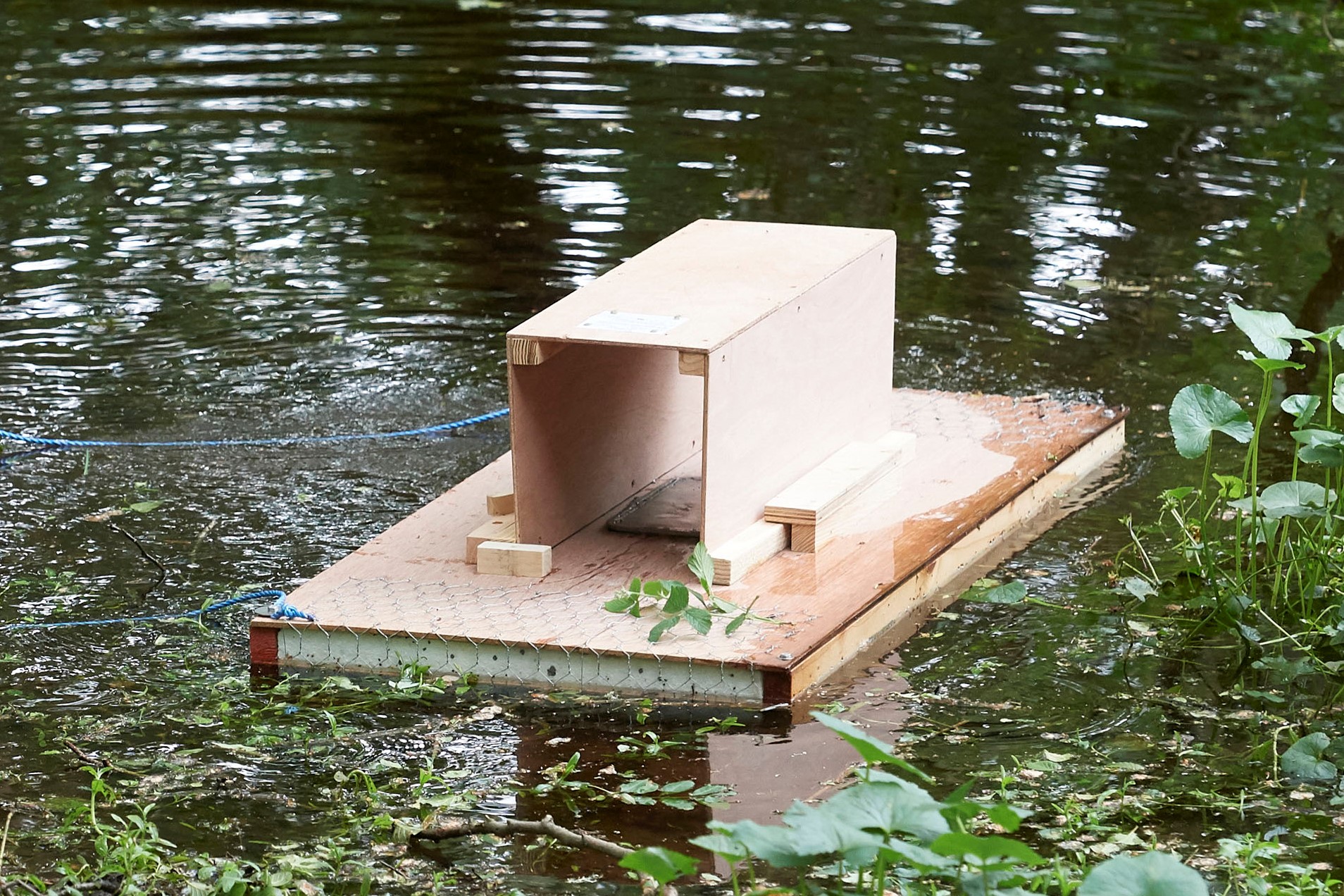
Mink rafts and traps
The mink monitoring raft floats on the edge of river or burn, and mink, being inquisitive creatures, will investigate and go through the wooden tunnel. Inside the tunnel is a clay pad, on which the mink (or any other creature) will leave its paw prints.
When the tell-tale prints of a mink are found we know they are present in that area. At this stage a live capture trap is installed in the tunnel to catch the mink which is then humanely dispatched.
Download further information about mink rafts and how to build one.
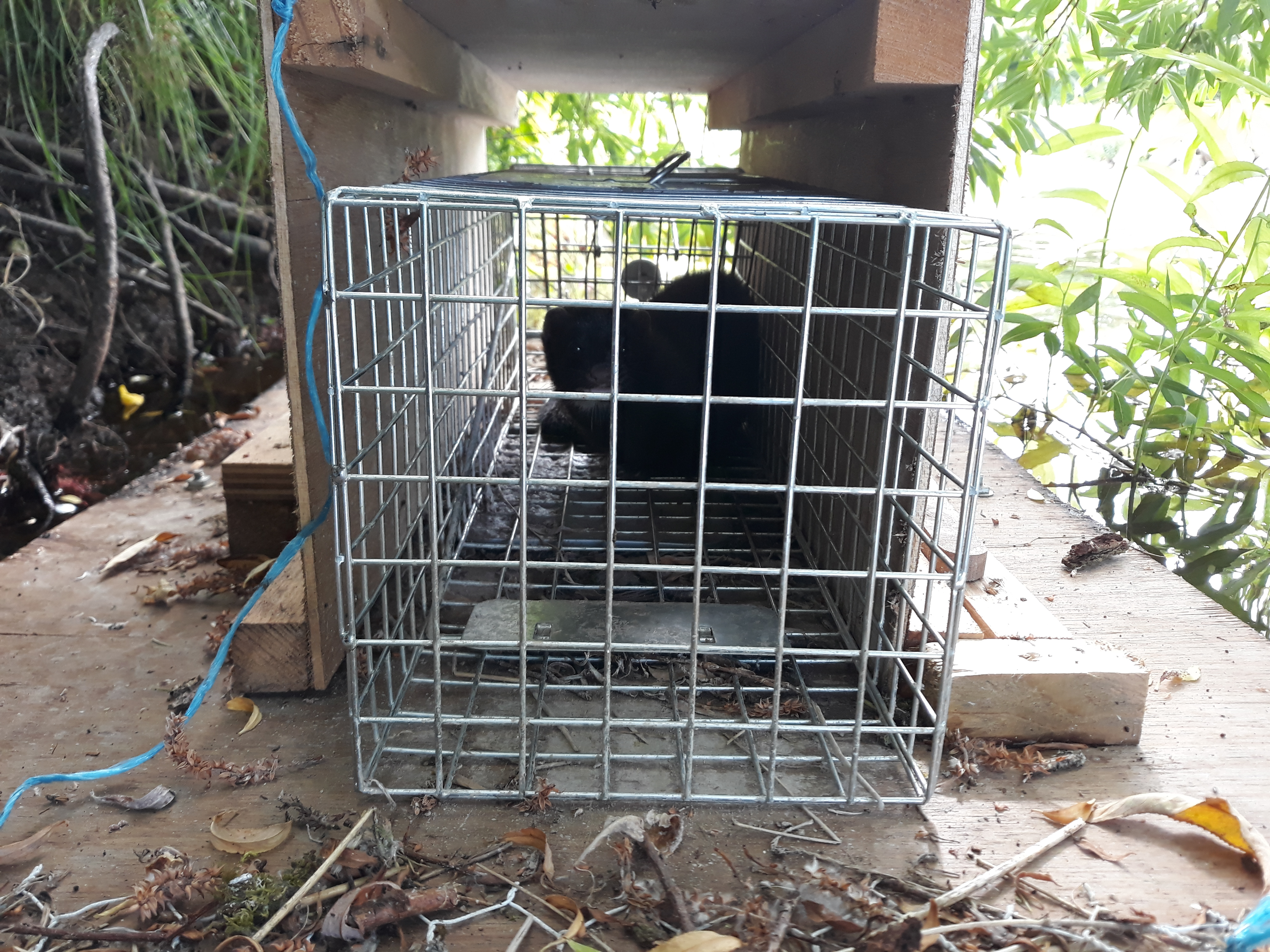
Catching mink
If mink are found in an area, the clay pad on the raft is changed for a live capture trap. These traps must be checked daily at this stage to see if anything has been caught - volunteers or project staff can do this. Anyone monitoring a mink trap is paired with a local dispatcher who has been trained to humanely dispatch any mink caught.
We only use live capture traps so any non-target species, like pine marten or young otters, can be released safely and unharmed. Putting the traps onto rafts also reduces the likelihood of catching non-target species as not many animals fancy a swim!
Struggling to catch that evasive wily mink? Read our blog post of trapping tricks: Stopping mink in their tracks - tips and tricks of the trade
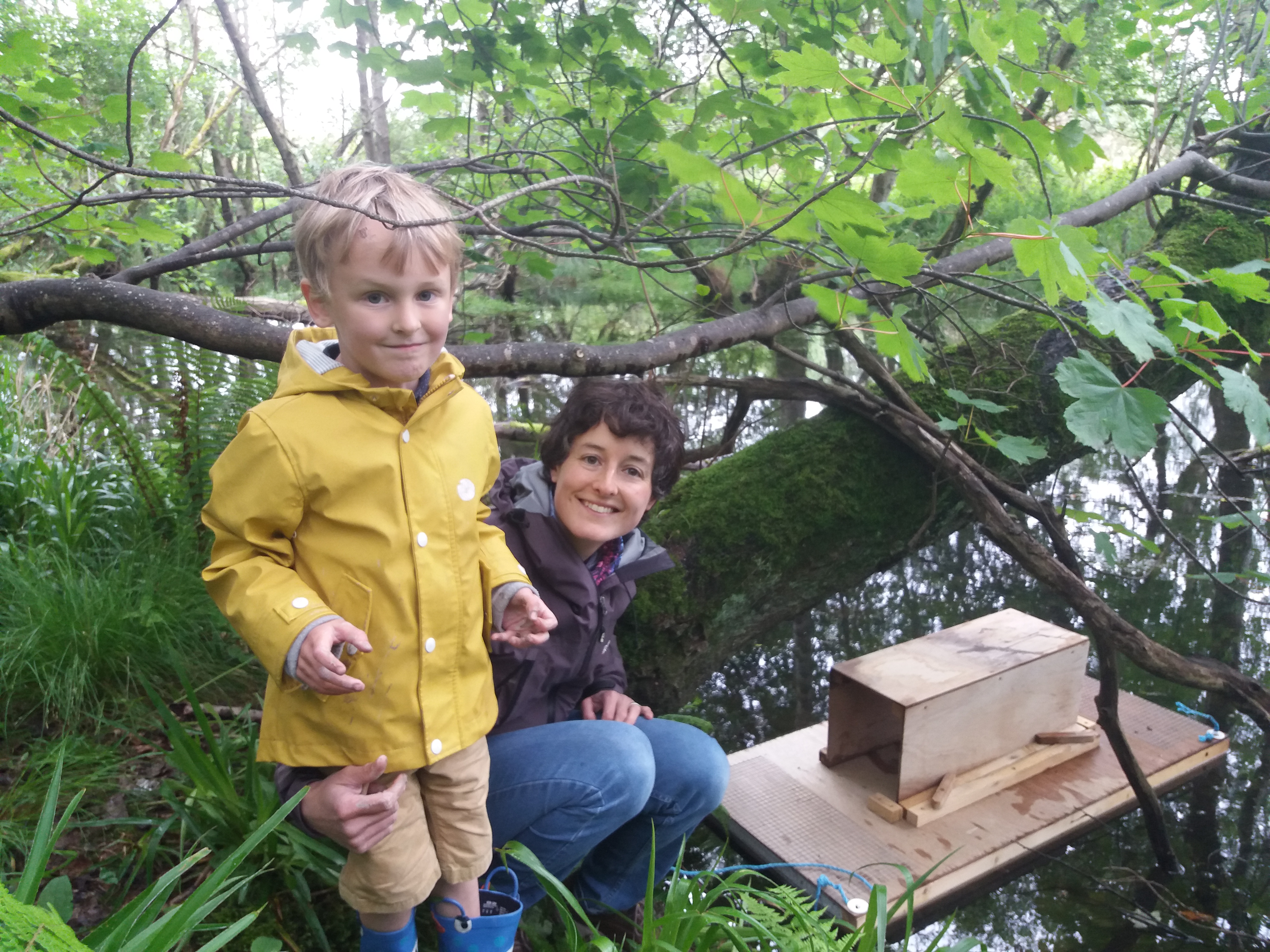
Could you monitor a raft or trap?
Our project relies on the support of volunteers to adopt mink rafts and traps and help us monitor for, and catch, American mink across a wide area.
No experience is necessary, you just need to visit the raft every 1-2 weeks and check for the tell-tale sign of mink footprints in the clay. Traps need to be visited daily to see if anything has been caught and if it has you just need to call us. The raft/trap is provided by us, and one of our project staff will help you install it and answer all your questions.
Watch a video of Elise, one of our volunteers showing you her mink raft and explaining what's involved in checking it.
Over 350 volunteers are already helping us monitor for and catch mink, together they look after around 650 rafts and traps - we really couldn't undertake mink control on this scale without the support of our volunteers.
Sign up here to volunteer with our mink project
Stopping mink in their tracks
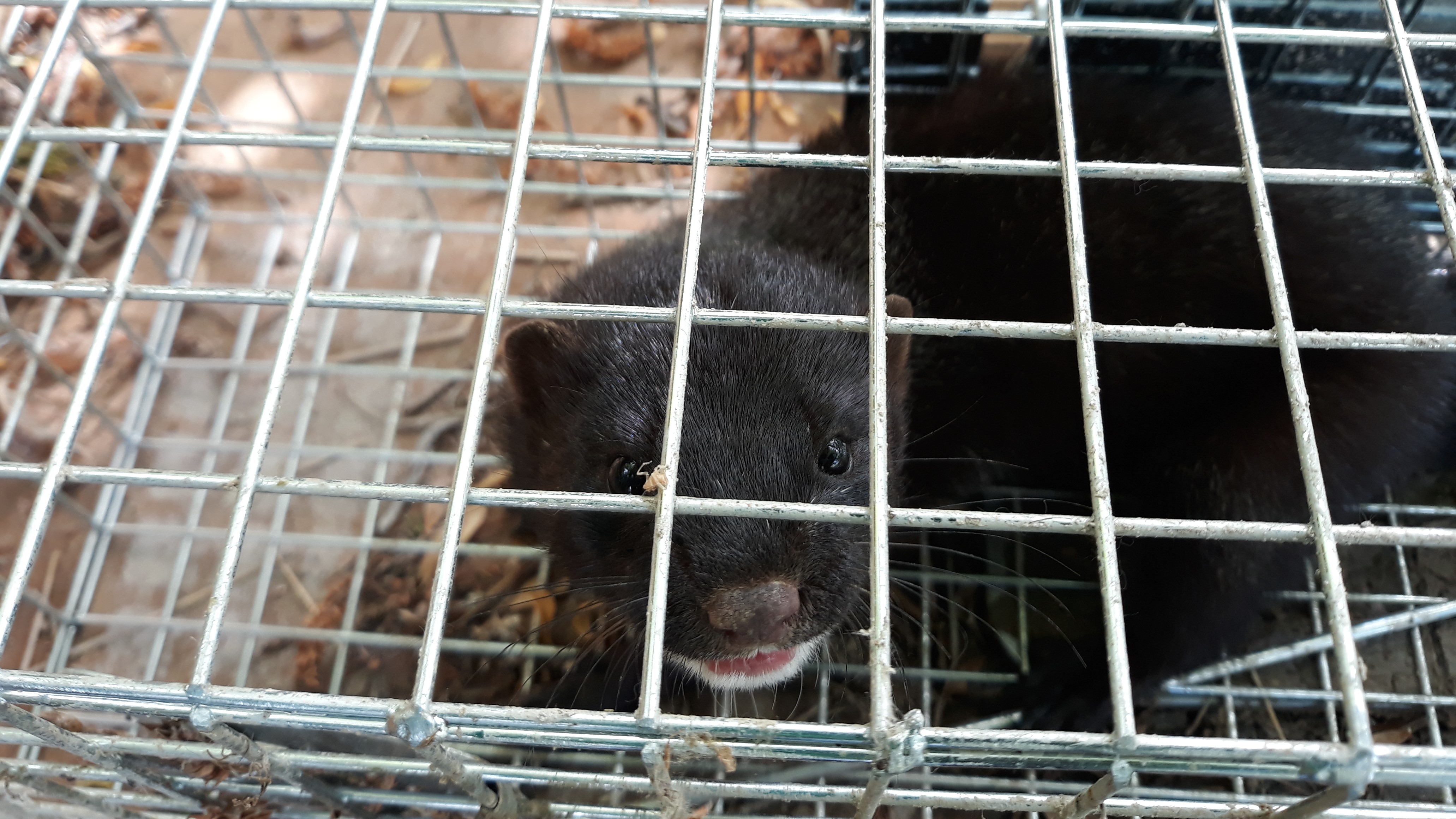
Our mink control project has been running since Spring 2018, when our project started. Since then we have been working to establish an extensive mink monitoring network across northern Scotland and as of end of 2020, we have around 650 rafts and traps across this area, looked after by around 350 volunteers.
The map below shows the distribution of rafts across our project area, this coverage is only achievable thanks to the support of our volunteers.
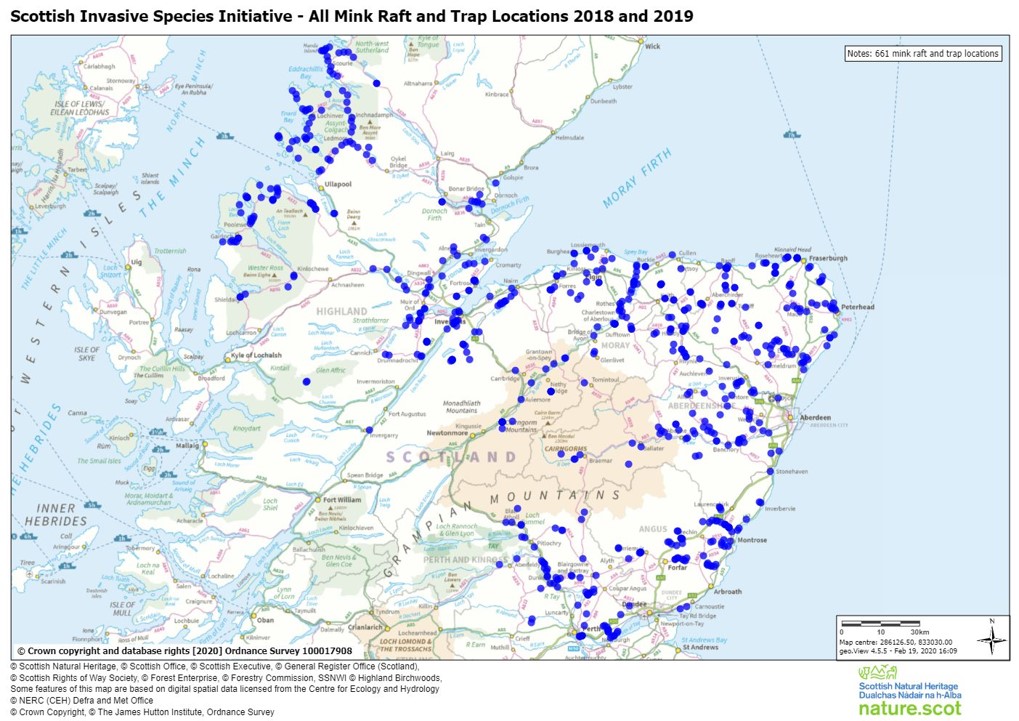
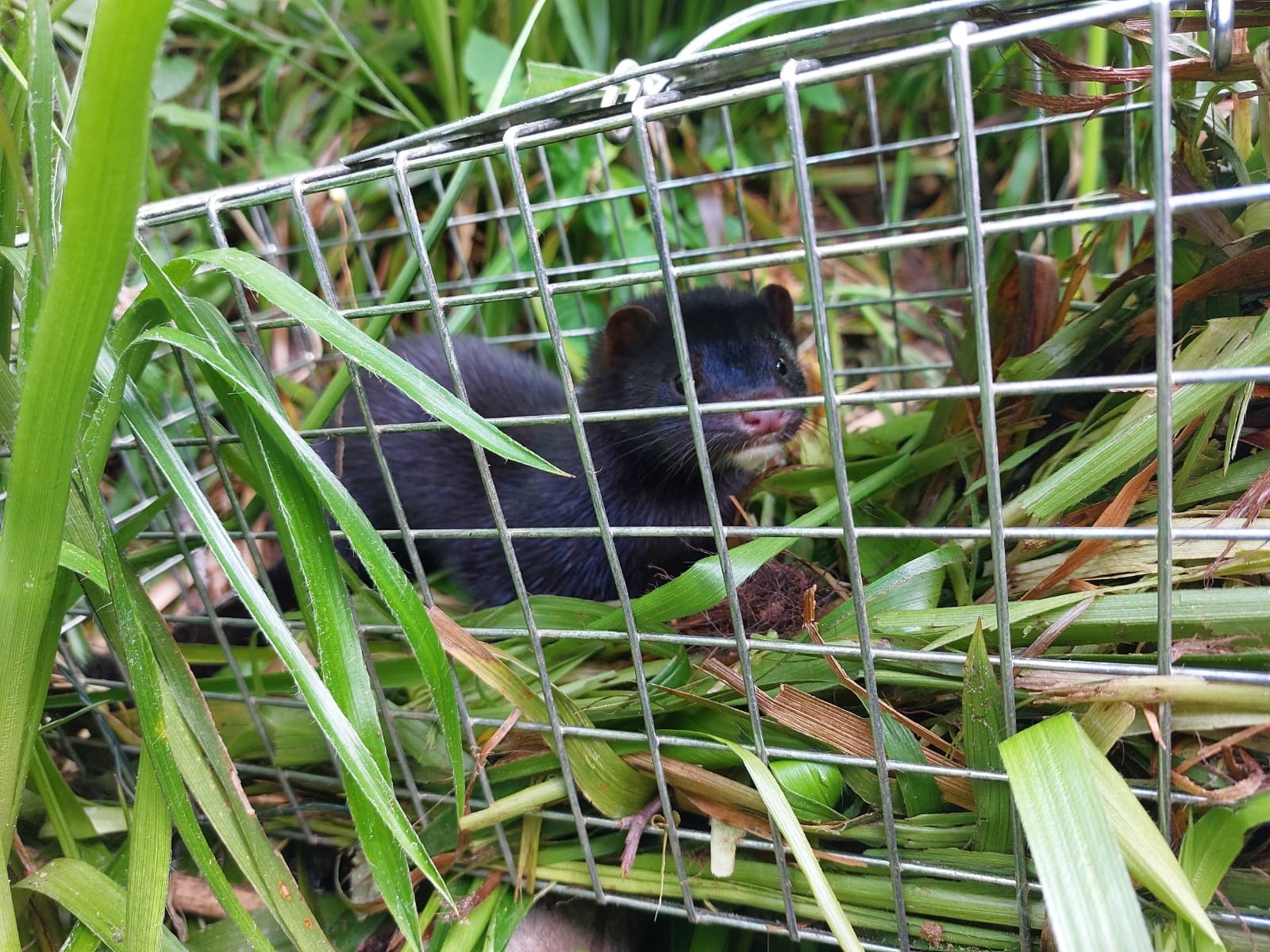
Over the first three years of mink control (to end of 2020) we have caught 371 mink. These mink were caught from 172 different locations - but some sites are more fruitful than others. At 94 sites we've removed just a single mink, at 59 locations we've removed 2-4 animals (153 in total) and at 19 sites we have captured five or more animals (124 in total).
This means that just 78 locations account for 75% of the total mink captures. However all our sites are important and capturing any migrating mink that might be passing through an area is critical so these traps that haven't caught anything or rafts that haven't recorded presence are still playing an important role.
The map below shows the 'hot-spots' that have caught five or more animals.
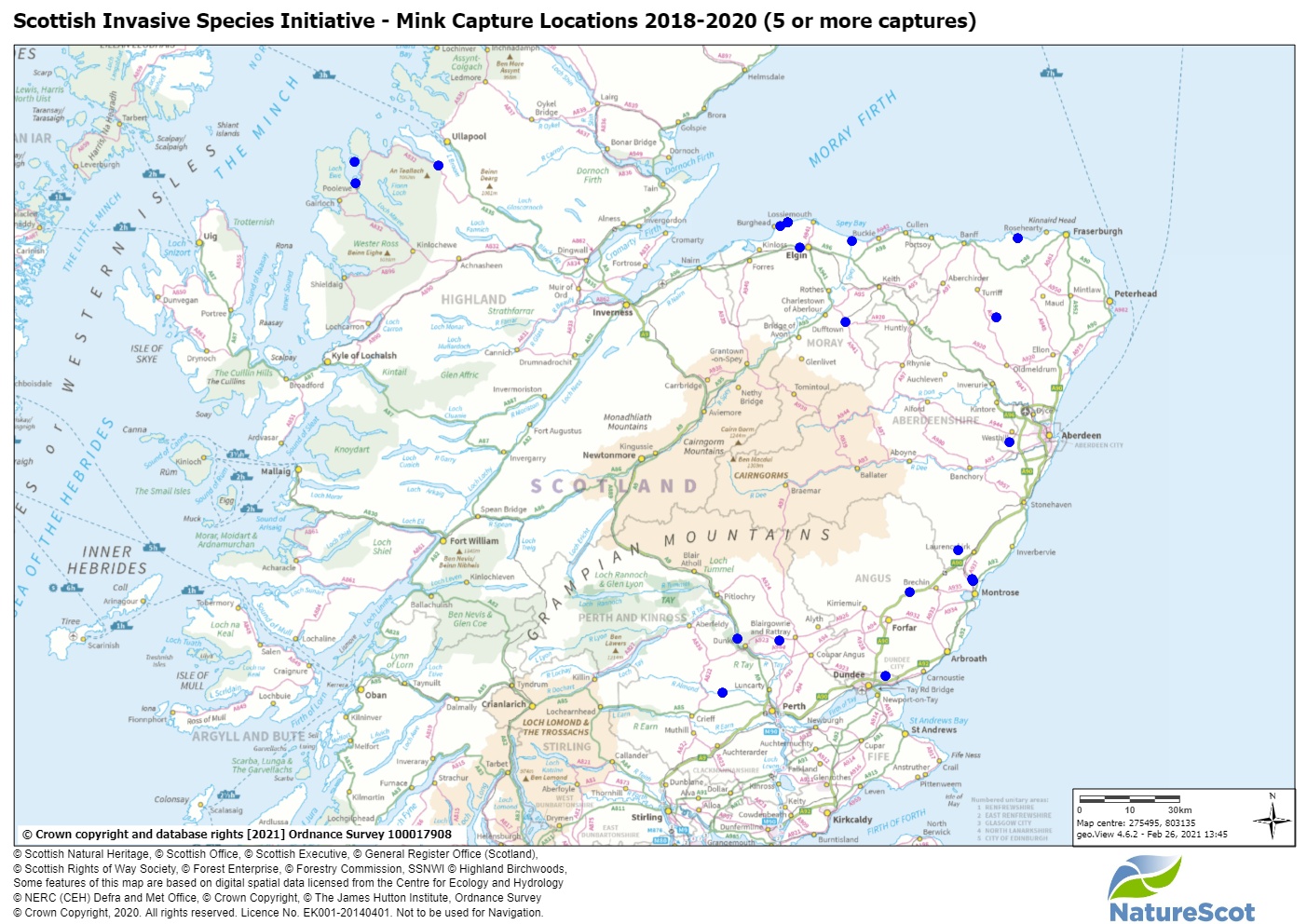
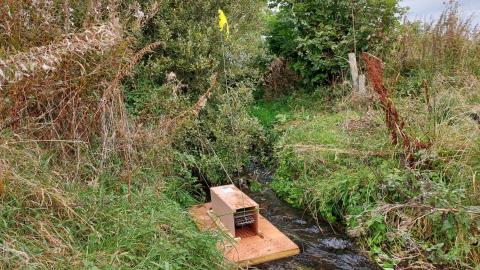
Mink newsletter
Download our annual mink newsletter:
